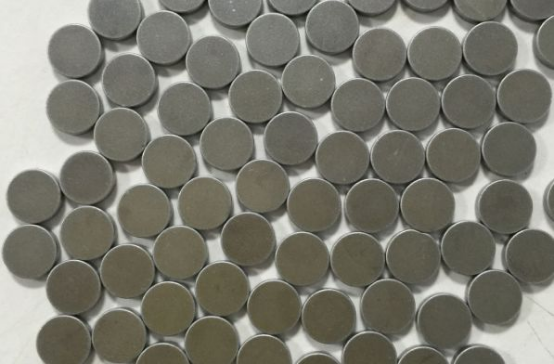We all know that the sintered NdFeB permanent magnet material is produced by powder metallurgy process, it is a kind of chemically active material, there are tiny pores inside, and it is easy to be oxidized in the air with rich Nd phase. After the material is corroded or component damage, over time will cause the magnetic properties of the attenuation or even loss, thus affecting the use of the performance and life of the whole machine, so the use of strict anticorrosion treatment must be carried out before use. Previously there are also articles for you to introduce several common plating, today we will systematically sort out and compare the common NdFeB plating.
Surface protection treatment can be divided into two categories: wet method and dry method
Wet method is the magnet in pure water, inorganic solution or organic solution under the implementation of the surface protection treatment, such as electroplating, chemical plating, electrophoresis, spraying and dip coating. Dry method is the magnet does not contact the solution, through the physical or chemical process to implement the surface protection treatment, such as physical vapor deposition (PVD) and chemical vapor deposition (CVD). Physical vapor deposition includes vacuum evaporation plating, vacuum sputtering plating and ion deposition (IVD). Different coating methods have their own strengths and need to be selected for different application requirements.
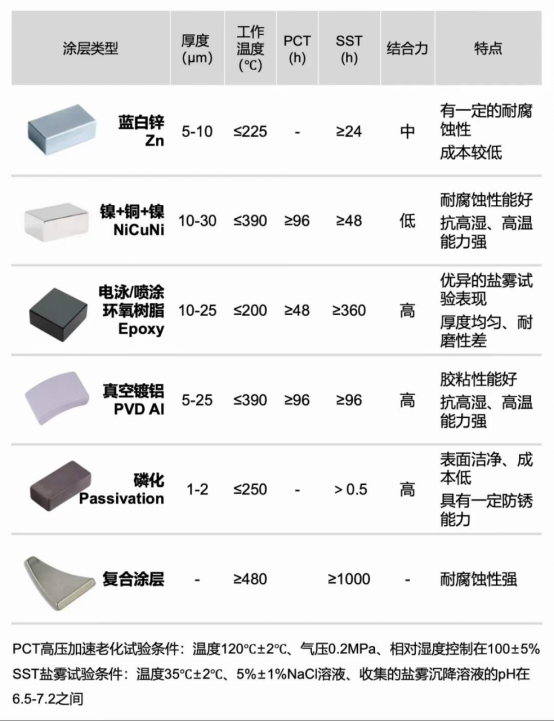
Wet surface treatment
The main methods are phosphating, electroplating, chemical plating, electrophoresis, spraying and dip-coating, etc., which can be used individually or in combination.
1. Phosphating
Phosphating process is to put the magnet into a solution containing phosphate, the solution reacts with the surface of the magnet to form a layer of phosphate film process. Phosphate film is generally gray, difficult to tolerate in water, so it can improve the magnet's water absorption and corrosion resistance, and can be used alone to deal with short-term corrosion resistance requirements or the use of the environment is not demanding occasions.
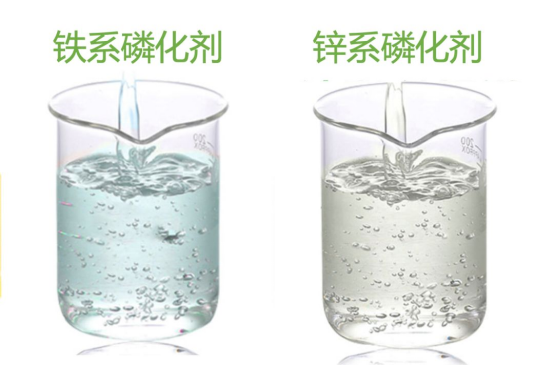
2. Electroplating
Electroplating process is the magnet to the cathode of the DC power supply, immersed in a solution containing cations of the plated material, the cations will migrate to the cathode under the action of the electric field and transformed into metal atoms crystallized on the surface of the magnet.
Sintered NdFeB is commonly galvanized and nickel plated, as well as nickel-copper-nickel composite plating.
- Zinc is more stable in dry air, in humid air or water containing oxygen will generate zinc carbonate film, which can slow down the corrosion rate of zinc, but in acid and alkali salt solutions, oceanic atmosphere, high temperature and high humidity air corrosion resistance is poor, passivation can significantly improve the corrosion resistance of zinc plating.
- Nickel is easy to form a very thin passivation film with oxygen in the air, and has good corrosion resistance to atmosphere, alkali and some acids at room temperature, so nickel plating has become the most common plating method for sintered NdFeB. However, nickel is an excellent soft magnetic material, which can form a shield to the substrate magnetism, and the shield is especially obvious when the magnet is small or thin. The risk of erosion is higher with a single layer of nickel, and multi-layer plating or composite plating can be a good solution to this problem.
- Copper is chemically active and prone to rust, so it is generally not used alone, but as an underplating or intermediate layer to improve the bonding between the substrate and the surface plating.
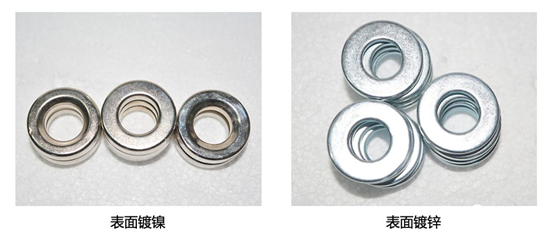
3. Chemical plating
Chemical plating and electroplating, also through redox reaction, the metal ions in the plating solution is reduced to atoms attached to the surface layer of the magnet, the difference is that there is no current to attract ions, enhance the atomic adhesion, so there is a need for a reducing agent in the plating solution coexistence, the surface of the substrate also needs to be catalyzed. No need for power supply is the biggest advantage of chemical plating, it can be in the shape of complex magnet surface to form a uniform thickness of plating, plating hardness, small voids, high chemical stability.
4. Electrophoresis
Different from phosphating and electroplating, the surface protection layer formed by electrophoresis, spraying and dip coating is organic. Electrophoresis is a phenomenon in which the charged colloidal particles in the conductive dispersion medium move toward the anisotropic electrode direction under the action of an external electric field, and electrophoretic coating makes use of this characteristic to make the charged organic coating molecules (usually epoxy resin) firmly adsorbed on the surface of the magnet as the anisotropic electrode, and the magnet is taken out from electrophoresis tank and then cured to form a dense protective film.
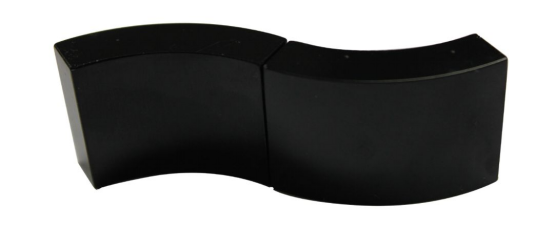
Dry Surface Preparation
The steps for chamfering and degreasing of magnets in dry coating are similar to those for wet coating, but dry coating does not require the chamfering of magnets to be made very large because dry coating has a more uniform film thickness, low film thickness under equal corrosion conditions, and relatively small edge effects.
1. Physical vapor deposition (PVD) - vacuum ion evaporation plating (IVD)
Vacuum ion vapor deposition is a kind of physical vapor deposition method, developed from the vacuum evaporation process. Vacuum evaporation plating is a metal material to be plated in a vacuum environment by resistance heating, arc heating or sputtering and other methods of evaporation, the atomic state of the metal on the surface of the magnet deposition, crystallization and growth into a complete coverage of the metal film of the magnet, which is the most mature process is the most mature resistance heating evaporation plating of aluminum. Vacuum ion plating accelerates the deposition of aluminum vapor by loading a high negative bias pressure between the evaporation source and the magnet, further improving the adhesion of the magnet to the aluminum film.
2. Chemical Vapor Deposition (CVD)
The application of Chemical Vapor Deposition parylene polymer (Parylene Parylene) has been developed in recent years to the field of NdFeB surface protection. The coating process is carried out in a vacuum environment, where the Parylene is heated and sublimated into a gas-phase monomer, which is then deposited on the surface of the magnet at a lower temperature and polymerized to form a solid film of Parylene Parylene Parylene has a very low water vapor permeability, which provides superior moisture corrosion protection.
